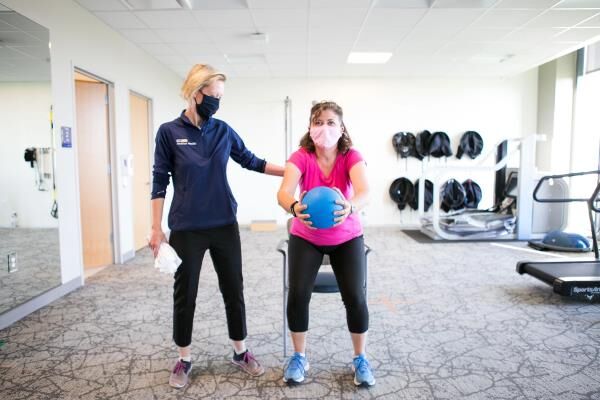(StatePoint) Long COVID can affect anyone who’s had COVID-19, even those who’ve had mild illness or no symptoms initially. New data from the Centers for Disease Control and Prevention shows that nearly 1 in 5 U.S. adults who have had COVID-19 experience new or lingering symptoms that last three or more months after first contracting the virus. Physical therapists can play an essential role in managing symptoms of long COVID.
Long COVID is unpredictable, and research is evolving, however common symptoms include extreme fatigue, shortness of breath, racing heart, dizziness, muscle aches and pains, brain fog, problems completing everyday activities and poor exercise tolerance. It’s also important to note that certain types of physical activity may not be appropriate for everyone living with long COVID.
“A highly-personalized plan of care that includes working with a physical therapist is important,” says Leo Arguelles, PT, DPT, American Physical Therapy Association spokesperson. “People with long COVID can benefit from being monitored during exertion and should follow prescribed exercise dosing that helps them gradually progress, rather than pushing through fatigue on their own, which could potentially set them back.”
Physical therapists are movement experts who regularly treat individuals with the kinds of symptoms that people with long COVID experience. Here are three reasons to consider including a physical therapist on your long COVID care team.
Physical therapists:
1. Take a full-body approach. Physical therapists assess your overall well-being. They can develop a personalized treatment plan to address issues such as fatigue, respiratory function and cardiac endurance. They can work and communicate with your primary care physician and can refer you to other health care providers if they feel you’d benefit from seeing another specialist. Physical therapists and physical therapist assistants collaborate with each other, and with other health professionals, to ensure that you receive the best care.
2. Help you move safely. Movement is essential to your recovery and your mental health. However, for some people, long COVID includes post-exertional malaise, or PEM, a worsening of symptoms after physical or mental activities. Your ability often may fluctuate — an activity that’s easily tolerated one day may exacerbate symptoms the next. Physical therapists develop prescribed exercise programs based on your symptoms and how your body responds and can monitor your symptoms, blood pressure, heart rate and oxygen levels to ensure your safety while doing exercises. This may include low-intensity stretches, strengthening exercises and balance training.
3. Help improve your quality of life. Through patient education, a physical therapist can help you find the balance between rest and activity and identify the right kind and amount of movement you should get to improve your tolerance for everyday activities.
More research is being done on long COVID every day. Your physical therapist will review available research findings and can adjust your treatment plan as needed. To learn more and find a PT near you, visit ChoosePT.com.
*****
Photo Credit: (c) APTA









